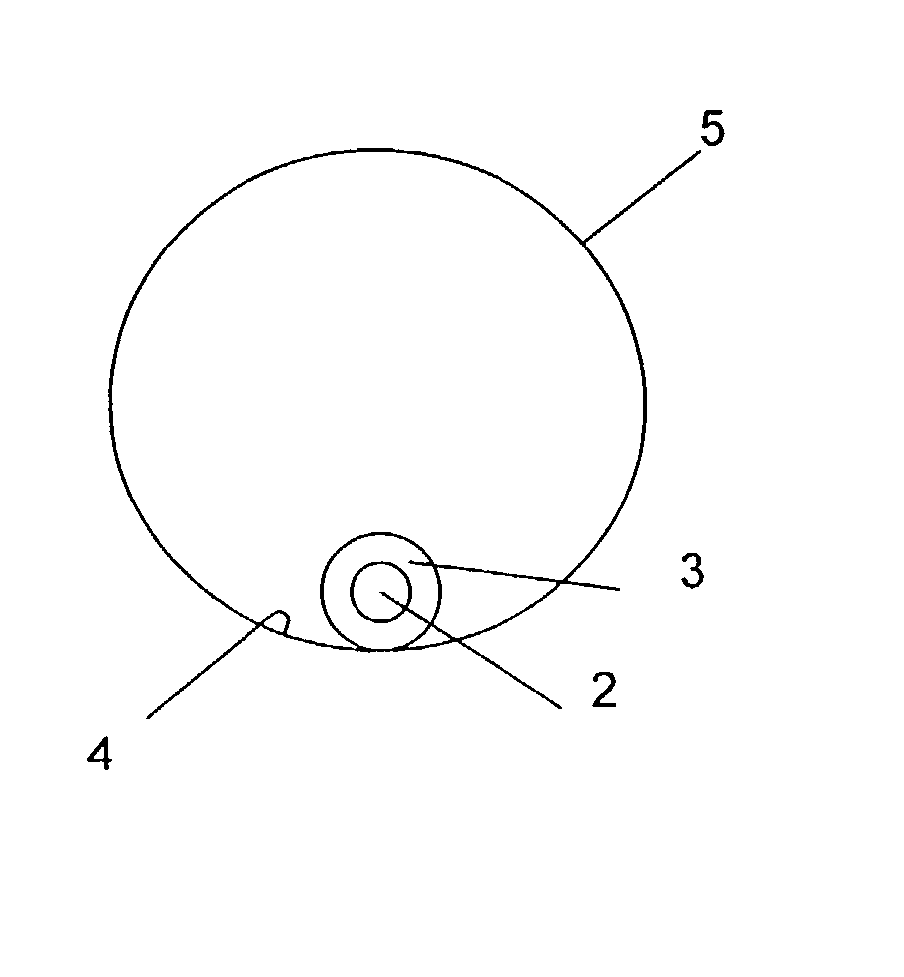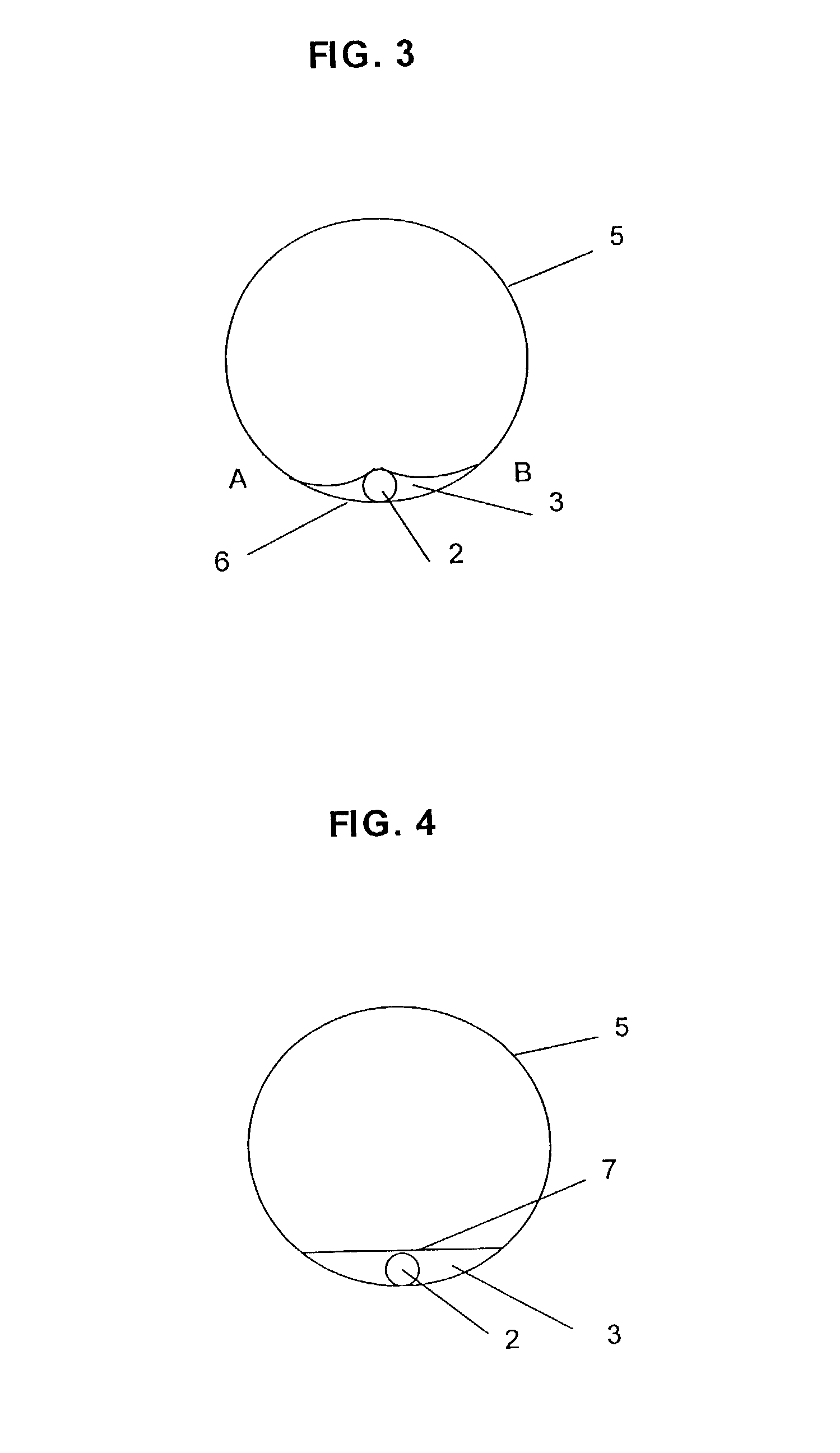Method of installing a tubular element
a tubular element and installation method technology, applied in the direction of cables, cable installation in underground tubes, instruments, etc., can solve the problems of retaining solid residues along the duct, interfering with subsequent cleaning operations, and long operation, and achieve the effect of low cos
- Summary
- Abstract
- Description
- Claims
- Application Information
AI Technical Summary
Benefits of technology
Problems solved by technology
Method used
Image
Examples
Embodiment Construction
[0031] The unit 1 comprises a tubular element 2 coated in a thick layer of a fixing compound 3, as shown in FIG. 1. By way of example, the tubular element 2 is a hollow tube having a diameter of less than 10 mm, for receiving one or more cables, in particular optical fiber cables as used in telecommunications. Once the tube has been installed, cables placed within the tube can be changed or other cables can be added thereto without any need to repeat the operations involved in installing the tube. By way of example, the fixing compound 3 may be a hot-melt glue which is solid at operating temperatures.
[0032] The unit 1 is inserted into the cavity in such a manner as to rest on the bottom 4 of the cavity whose own diameter is about 100 mm, as shown in FIG. 2. As a general rule, installing the unit 1 in the cavity 5 involves at least two stages. A first stage comprises exploring and cleaning the walls of the cavity, while a subsequent stage involves the unit 1 being installed in the ca...
PUM
| Property | Measurement | Unit |
|---|---|---|
| Temperature | aaaaa | aaaaa |
| Length | aaaaa | aaaaa |
| Adhesivity | aaaaa | aaaaa |
Abstract
Description
Claims
Application Information
 Login to View More
Login to View More - R&D
- Intellectual Property
- Life Sciences
- Materials
- Tech Scout
- Unparalleled Data Quality
- Higher Quality Content
- 60% Fewer Hallucinations
Browse by: Latest US Patents, China's latest patents, Technical Efficacy Thesaurus, Application Domain, Technology Topic, Popular Technical Reports.
© 2025 PatSnap. All rights reserved.Legal|Privacy policy|Modern Slavery Act Transparency Statement|Sitemap|About US| Contact US: help@patsnap.com



